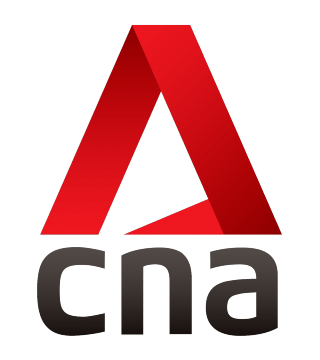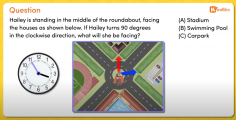
Primary 4 Maths Curriculum
To ease the transition into upper primary, KooBits’ primary 4 topics are aligned with Singapore MOE’s syllabus, a globally-recognised curriculum.
We have 100,000+ P1-P6 questions to help your child keep up with upper primary math. Start your trial today and give your child a fun and effective place to practice math ↓







Numbers To 100 000
- Count to 100 000
- Write numbers to 100 000 in numerals
- Write numbers to 100 000 in words
- Count on to one hundred thousand
- Find the value of each digit of a 5-digit number using a place value chart
- Find the expanded form of a 5-digit number
- Compare numbers within 100 000 using greater than and less than
- Order numbers within 100 000
- Number patterns within 100 000
- Round a 2-digit number up or down to the nearest ten
- Rounding a 3-digit number to the nearest ten
- Rounding a 3-digit number to the nearest hundred
- Rounding a 4-digit number to the nearest hundred
- Estimate and checking sums by rounding numbers
- Estimate and checking differences by rounding numbers
- Find the tens/hundreds /thousands to be added to obtain a given value
- Find the difference between two numbers rounded to the nearest tens/hundreds/thousands
Factors & Multiples
- Determine if a 1-digit number is a factor of a given number within 100
- Find common factors of two whole numbers
- Find multiples of a number
- Determine if a number is a multiple of given 1-digit number
- Find the first twelve multiples of a given 1-digit number
- Find common multiples of two given 1-digit numbers
Four Operations of Whole Numbers
- Multiply with regrouping in thousands, hundreds, tens and ones using a place value chart
- Multiply by a 1-digit number without a place value chart (up to 4-digit)
- Multiply a 2-digit number by tens
- Multiply a 2-digit number by a 2-digit number
- Multiply a 3-digit number by a 2-digit number
- Divide a 4-digit number by a 1-digit number without a remainder
- Divide a 4-digit number by a 1-digit number with a remainder
- Use models to solve multi-step word problems
Fractions
- Interpret fractions greater than one whole as mixed numbers
- Add a whole number and a fraction to get a mixed number
- Express mixed numbers in simplest form
- Interpret fractions greater than one whole as improper fractions
- Express improper fractions in simplest form
- Express mixed numbers as improper fractions in simplest form
- Express improper fractions as mixed numbers in simplest form
- Compare two fractions using fraction discs
- Compare two fractions by changing to common denominators
- Compare and order fractions
- Add fractions (with denominators not exceeding 12)
- Add two fractions to get mixed numbers
- Add three fractions to get mixed numbers
- Subtract fractions (with denominators not exceeding 12)
- Subtract fractions from whole numbers
- Find the fraction of a part of objects
- Find the fractional part of a set
- Find a fractional part of a number
- Use part-whole models to solve addition word problems involving fractions
- Use part-whole models to solve subtraction word problems involving fractions
- Use part-whole models to solve word problems involving fraction of a set or part of a set
Angles
- Naming angles
- Use a protractor to measure angles in degrees
- Quarter, Half, Three-quarterand Complete Turns
- Show directions using 8-point compass
- Describe movement using ‘clockwise’ and ‘anticlockwise’
- Find angle in clockwise/anti-clockwise movement around a compass
Squares And Rectangles
- Identify squares and their properties
- Identify rectangles and their properties
- Use properties of squares and rectangles to find unknown angles
- Use properties of squares and rectangles to find the side lengths of figures
Decimals
- Express fractions in tenths as decimals
- Find equivalent ones and tenths
- Write mixed numbers in decimal notation
- Write improper fractions in decimal notation
- Write decimals to tenths in expanded form
- Measurement in decimals (1 decimal place)
- Represent decimals on a number line (1 decimal place)
- Express fractions in hundredths as decimals
- Find equivalent tenths and hundredths
- Express tenths and hundredths as decimals
- Express fractions as two-place decimals
- Express ones, tenths and hundredths as decimals
- Express mixed numbers as two-place decimals
- Express improper fractions as two-place decimals
- Write decimals to hundredths in expanded form
- Measurement in decimals (2 decimal places)
- Represent decimals on a number line (2 decimal places)
- Represent thousandths
- Find equivalent hundredths and thousandths
- Write hundredths and thousandths in decimal notation
- Express fractions as three-place decimals
- Write decimals to thousandths in expanded form
- Represent decimals on a number line (3 decimal places)
- Find 0.1 more than or 0.1 less than
- Find 0.01 more than or 0.01 less than
- Find missing numbers in a pattern
- Compare decimals to hundredths
- Order decimals to hundredths
- Rounding decimals to the nearest whole number
- Rounding decimals to 1 decimal place
- Rounding decimals to 2 decimal places
- Express fractions as decimals
- Express improper fractions as decimals
- Express mixed numbers as decimals
- Express decimals as fractions
- Express decimals as mixed numbers
- Estimate sums by rounding decimals to the nearest whole number
- Estimate differences by rounding decimals to the nearest whole number
- Estimate products by rounding decimals to the nearest whole number
- Estimate quotients by rounding decimals to a whole number
- Estimate by rounding decimals to the nearest tenth
- Use models to solve word problems involving decimals
Four Operations of Decimals
- Add decimals with one decimal place without regrouping
- Add decimals with one decimal place with regrouping in tenths
- Add decimals with one decimal place with regrouping in ones and tenths
- Add decimals with two decimal places without regrouping
- Add decimals with two decimal places with regrouping in hundredths
- Add decimals with two decimal places with regrouping in tenths and hundredths
- Subtract decimals with one decimal place without regrouping
- Subtract decimals with one decimal place with regrouping in ones and tenths
- Subtract decimals with one decimal place from whole numbers
- Subtract decimals with two decimal places with regrouping in tenths and hundredths
- Subtract decimals with placeholder zeroes
- Solve word problems involving addition of decimals
- Solve word problems involving subtraction of decimals
- Multiply one-place decimals by a 1-digit whole number
- Multiply hundredths by 1-digit whole number
- Multiply two-place decimals by 1-digit whole number
- Divide tenths by 1-digit whole number without regrouping
- Divide hundredths by 1-digit whole number without regrouping
- Divide one-place decimals by 1-digit whole number with regrouping
- Dividing numbers and correcting answers to 1 decimal place
- Dividing numbers and correcting answers to 2 decimal places
- Solve word problems involving multiplication of decimals
- Solve word problems involving division of decimals
Symmetry
- Identify symmetric figures
- Identify symmetrical & asymmetrical figures
- Identify lines of symmetry of a figure
- Completing symmetric figures on square grids
Area And Perimeter
- Find the perimeter of a rectangle using a formula
- Find one side of a rectangle given its perimeter and the other side
- Find one side of a square given its perimeter
- Find one side of a rectangle given its area and the other side
- Find one side and the perimeter of a square given its area
- Find the perimeter of a composite figure by adding the lengths of its sides
- Find the area of a composite figure by adding the area of its parts
- Use subtraction to find the area of a composite figure
- Find the area of a path around a rectangle
- Find the area and perimeter of parts of a figure
Tables And Line Graphs
- Complete a table from given data
- Read and interpret tables
- Read and interpret line graphs
- Solve problem using data given in a table format
- Solve problem using data given in a line graph
- Identify the relationship between two variables in a line graph
Time
- Measurement of time in seconds
- Given time express in minutes and seconds, convert it to seconds
- 24-hour clock
- Solve word problems involving time in 24-hour clock
High-ability - Whole Numbers
- Given total quantity/amount & relationship between two persons/items, find the quantity/amount for one person/item
- Given the volume of other items, find final volume of an item rounded off to the nearest tens/hundreds/thousands
- Find the mystery number given the events of operations and final value
- Given total value, repeated quantity relationship, find value of one item
- Given repeated quantity relationship & one absolute quantity, find total quantity
- Given total quantity & one absolute quantity, find quantity of an item
- Given difference & repeated quantity relationship, find product of two numbers
High-ability - Whole Numbers
- Given the amount/quantity for one person & relationship between two persons, find the total amount/quantity
- Given the monthly amount/quantity, find amount/quantity for multiple months rounded off to the nearest tens/hundreds/thousands
- Given total amount/quantity, repeated quantity & a difference relationship among the persons, find the amount/quantity for one person
- Given final amount & two sets of transfer amount, find initial amount
- Given unitary value. find the multiples of the number rounded off to the nearest tens/hundreds/thousands
- Given earning and spending amounts per month and number of years of saving, find total savings amount
- Given unit price for different items, total sales & sales of one item, find the quantity sold
- Given total amount & repeated quantity relationship, find cost of item
- Given total amount & difference in unit price, find cost of item
- Given transaction amount & repeated quantity relationship, find initial amount
- Given repeated quantity relationship & total amount, find difference in unit price
High-ability - Factors & Multiples
- Find the sum of common factors for two given numbers
- Find the product of a given number and the first common multiple of two given numbers
- Find the sum of the multiples of a given number
- Find the product of the sum of the common factors & the first common multiple of two given numbers
- Given time intervals of two events and time of previous concurrence
- Given unit cost of two items, find total cost for the first common multiple
High-ability - Fractions
- Given final fractional amount & transfer fractional amount, find initial amount
- Given initial fractional amount & transfer fractional amount, find final amount
- Given fractional amounts, find total amount
- Given final fractional amount & transfer fractional amounts, find initial amount
- Given final fractional amount & transfer fractional amount, find initial amount. Involving improper fraction
- Given initial quantity & transfer amount, find final fraction
- Given total quantity & a fraction, find quantity of item
- Given fractional quantity & absolute difference, find quantity of an item
- Given total quantity, quantity of a group & fractional quantity of sub-groups, find absolute quantity of a sub-group
High-ability - Decimals
- Given production rate, find output quantity
- Given total mass & quantity of items, find unit mass
- Find sum of two numbers expressed in different notations
- Given values in an operation, find the number of tenths/hundredths/thousandths
- Given unit length, item quantity & required length, find initial length
- Given unit mass, quantity difference & total mass, find quantity of one item
High-ability - Decimals (Money)
- Given total value in decimal & relationship between two numbers, find one number
- Given total amount & unit price of one item, find cost of the other item
- Given repeated quantity relationship & amount for one party, find amount for the other party
- Given total amount & repeated quantity among parties, find amount for one party
High-ability - Area and Perimeter
- Given perimeter & length, find difference in length and breadth
- Given dimension & quantity of items, find area of each item
- Given perimeter & repeated quantity relationship between length and breadth, find area
- Given perimeter & difference between length and breadth, find area
- Given area, breadth & unit cost, find total cost of covering perimeter
- Given area of a square, find perimeter
- Given dimension of rectangles, find shaded area
- Find perimeter of a composite figure
- Find area of a composite figure
High-ability - Time
- Given two sets of mixed time, find sum
- Given two sets of mixed time, find difference
- Conversion between 12-hour clock and 24-hour clock
- Given duration of journey & starting time, find arrival time
- Given delay/advance time, find actual time
- Given starting and ending time, find duration of journey
- Given duration of journey & arrival time, find starting time
- Given starting time & duration of two events, find ending time
- Given starting and ending time, involving over-night timing, find duration of travel






Learn P4 Maths Faster with Animated Explanations
Our 1,000+ videos bring boring maths topics to life through exciting animations and colourful visuals. These videos are easy to understand, can be played repeatedly, and are perfect learning tools for a digital-first generation.
• Watch and learn anytime, anywhere.
• Every video links to a specific P4 maths topic.
• No supervision required. 100% self-directed learning.
Watch animated videos for free ↓

Master Syllabus Through Habit-Building
KooBits makes learning the P4 syllabus easy by creating a habit-forming environment. We use healthy rewards and motivational cues to encourage students to practice daily.
• Promotes self-directed learning.
• More efficient than cramming for exams.
• The healthier alternative to YouTube/Netflix/Disney+.
Master primary 4 syllabus quickly ↓

Connect P4 Syllabus To Real-World Problems
We make the syllabus more exciting and relevant by going into the “why” behind maths. There are over 90 hours of educational content, showing students how to use these topics to solve real world problems.
• Broaden students’ knowledge of the world.
• Helps students to apply the skills learnt under each topic.
• Aids long-term memory and recall of syllabus.
Watch enrichment videos for free ↓



